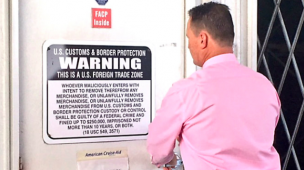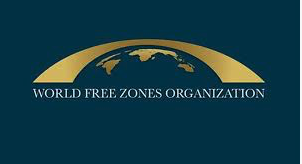Tempo de leitura: 3 minutos
Foreign Trade Zones can be a way to get around a tariff. They are on U.S. soil, but they don’t count as U.S. soil for customs purposes. There are hundreds of them around the U.S.
DAVID GREENE:
All right. If we’re looking for some historic parallel to President Trump’s tariffs on aluminum and steel, it may be Smoot-Hawley. That was a sweeping protectionist tariff in 1930. It slapped taxes on everything from imported butter to foreign tombstones, and it’s worth noting almost as soon as Congress enacted those tariffs, Congress enacted laws to help people get around those tariffs. Atossa Abrahamian from our Planet Money podcast tells us about one of those work-around laws.
ATOSSA ABRAHAMIAN: It was called the Foreign Trade Zones Act of 1934, and it said that certain small plots of land on U.S. soil didn’t count as being on U.S. soil for customs purposes. They’re called foreign trade zones. Dara Orenstein teaches American studies at George Washington University.
DARA ORENSTEIN: Merchandise in a zone is, in a sense, not yet in the U.S. People tried to promote it in the 1940s, early 1950s. They used phrases like an Ellis Island for merchandise, or a commercial waiting room.
ABRAHAMIAN: The first zone opened in New York City in 1937, and it was big news in the nut business.
ORENSTEIN: Brazil nuts were major headlines for foreign trade zones in the early ’30s.
ABRAHAMIAN: Importers would sail to Staten Island with boxes full of nuts, let the nuts sit in the zone until they lost water weight then pay lower customs duties because the nuts were lighter than when they came in. In the 1950s, the government allowed manufacturing in zones. Now companies could avoid tariffs by turning raw materials into finished products before paying taxes. Erik Autor is the president of the National Association of Foreign Trade Zones. He says even today that’s a big draw.
ERIK AUTOR: They actually contribute quite a bit to the U.S. economy and employment.
ABRAHAMIAN: He gives the example of tractors and John Deere. Whole tractors can be imported duty-free, but some tractor parts do have tariffs. By bringing the parts into a zone, building the tractor in the zone and only then importing the product, John Deere can pay the tractor tariffs, which amount to zero, instead of the taxes on its parts, which could be higher. On top of that, Autor says the company can employ American workers instead of sending factories offshore.
AUTOR: The zones program is designed to create a level playing field that will allow U.S.-based companies to compete effectively in the global economy.
ABRAHAMIAN: The zones could be an obvious loophole with Trump’s new tariffs on aluminum and steel, but whether they’ll help importers depends on details we don’t have yet.
AUTOR: We don’t really know what the impact of the president’s decision on steel and aluminum will be on manufacturers in the U.S. zones until we see more of the detail of what the president has in mind.
ABRAHAMIAN: The Department of Commerce has declined to comment, but Dara Orenstein says that if history is any guide, we may be on the cusp of a foreign trade zone boom.
ORENSTEIN: Protectionism is great for business for foreign trade zones.
ABRAHAMIAN: You might just pass one next time you’re driving by a port. If you see those huge lots with rows and rows of wrapped up cars, you’re probably looking at a foreign trade zone.






Os comentários foram encerrados, mas trackbacks e pingbacks estão abertos.